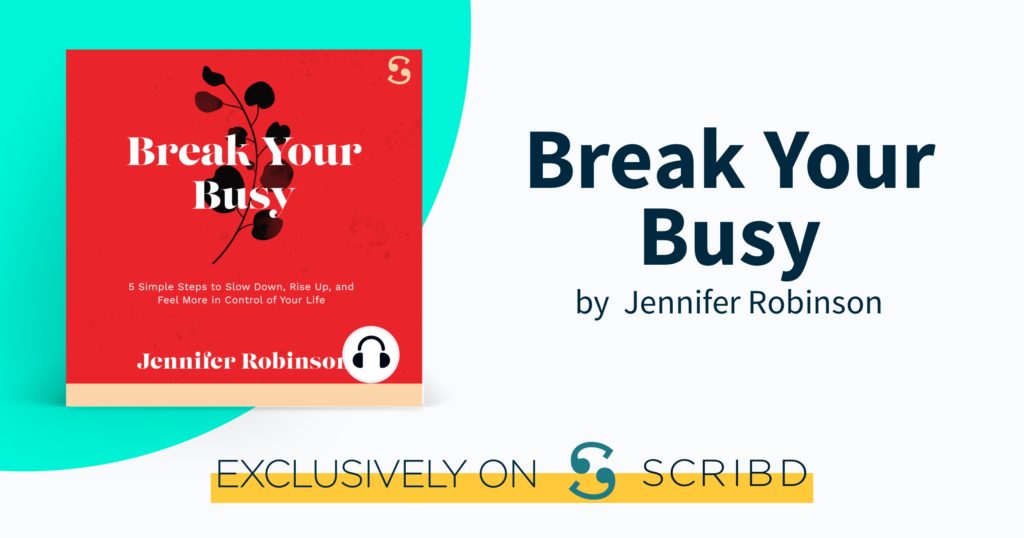As we close out the month of March, Peaceful Living Wellness founder Jen Robinson is sharing her thoughts on boundaries.
The flowers are blooming here in South Carolina! I hear from our Busy Moms in other places that there is still all sorts of cold weather still out there. If that’s what is happening in your area, hang in there! Spring will be there soon! Or, maybe you are a person who likes cold weather. If so, enjoy!
I mean that – no matter where you live, or what your weather is like, I want you to enjoy your life! If you have been reading the newsletter this past month you’ve seen that I’m doing something a little different. I’m taking you all on a journey through my coaching program. My BIG GOAL is to help support those of you who are living a busy, busy life to ditch that lifestyle and start living a life that you love!
So let’s talk about this month’s topic: Boundaries.
Setting boundaries with yourself and others is one of the most important things you can do to free-up some time for yourself. Setting boundaries with others allows you to say “no” to taking on too many things. Setting boundaries with yourself ALSO helps you say “no” to taking on too many things 🙂
Here is an example of a common boundary that moms need to set with dads:
Mom: Honey, I need a night to myself. Can you pick a night this week that you are in charge of dinner and getting the kids to bed?
Dad: Babe, I’ve been working all day and I need to be able to wind-down and watch the game.
Mom: I know that’s important to you. But, I have been working all day too. (If you’re a SAHM, it’s work taking care of the kids!). Games are not on every night. Please pick one night that I can have my wind-down time.
Dad: That’s true. Okay, how about Wednesday?
I know this is a simplified version, but you get the picture. She does not yell, get sassy or demanding. She uses a calm confident tone and clearly states her needs.
Once you get one evening a week for yourself, you can then use the same calm and confident tone and boundary-setting to ease into a more equal share of the child care (or whatever you are working on to free up more time for yourself).
But what about setting boundaries for yourself?
I know that may seem like a strange concept. But I find that it is often more important than setting boundaries with others. Moms can be their own worst task-masters!
Here’s how a self-coaching session can work to set a boundary for yourself. I’m going to throw myself under the bus and use an IRL example from my life:
I tend to be a social butterfly, but I can definitely overdo it and wear myself out. I’m a 7 on the Enneagram after all! I have filled all, but one weekend in March with social time. Plus, the second weekend I am taking my daughter and 2 of her friends to Disney World for my daughter’s birthday. It’s going to be fun, but exhausting!
I have been trying to plan a get together with another couple for some time now. I was talking to my husband last night and I said, “How does your April look?” He looked at me with surprise and asked, “April?” I know I have a weekend in March without anything scheduled. I was tempted to say, “oh well, we can do it in March…” But, I stopped myself. I need at least one weekend with nothing to do, but hang around the house and get stuff done in the house.
That’s a self-boundary! I used to fill every weekend and even some week nights. I no longer do that because I don’t want to be worn out. It brings me more joy when I’m with our friends if I’m not exhausted.
Now that you have a framework for basic boundary-setting, let’s talk about the difference between a boundary and a wall.
Boundaries vs Walls
This particular topic has become important to me over the past few years because I have witnessed a lot of people putting up walls instead of setting boundaries. The distinction between the two is important.
Boundaries are more flexible than walls. Think of a boundary as a wall with doors. In other words, it has openings that the other person can come through if the request made in the boundary is respected. Here’s an example of how a mom can set a boundary with her teenager:
TEEN (in a demanding tone): MOM! I’m late to practice! Come on, we gotta go!!!
MOM: Honey, I am happy to take you to practice. We are not late and I am finishing something up. However, I am not willing to take you anywhere if you speak to me in that tone-of-voice. I feel hurt and disrespected when you demand that I do things for you.
TEEN: You are so overdramatic!
MOM: Again, I am not going to take you anywhere if your tone-of-voice is, or words are, demanding, or in this case, demeaning.
TEEN: Huffs and stomps off.
TEEN (after seeing that his mom is not budging and will not take him to practice): I’m sorry mom. You’re right. I should not talk to you like that. I am feeling really nervous about practice today because I’m in a slump. But, that’s not an excuse to speak to you like you are my servant instead of my mom.
MOM: Thank you honey. I appreciate that you understand how I feel when you speak to me in that way. I’m sorry you’re in a slump. If you are comfortable with it, we can talk about it in the car on the way to practice.
As you can see, the mom in this scenario did not say, “I’m not taking you to practice because you are being a jerk!” In other words, she didn’t put up a wall. She allowed her son to make a choice about how he could act in order for her to do him the favor of taking him to practice. She also did not say that she would not take him, period. She gave him an explanation about how his tone of voice, and then his words, were hurtful to her. This allowed her son to understand her feelings and that his actions are directly related to her feelings and whether or not she would take him to practice.
I want to give you one more example of the difference between boundaries and walls. This time the example shows how people put up walls, mistaking them for boundaries:
A couple of years ago I was having a conversation in a Facebook group about friendships. One of the young women in the group said, “I have set a lot of boundaries with people lately. I just can’t talk to some people!” Not talking to someone is a wall, not a boundary. Walls are certainly necessary sometimes – especially when it comes to toxic people. But, when I questioned this woman about the particulars of the situations it turned out that some of her friends were not being very supportive of her. She actually did not want to cut them out forever, she wanted them to treat her differently. The problem was that she threw-up a wall, instead of having a heart-centered conversation and asking them for what she needed.
Have you done this to anyone in your life? Have you thrown-up a wall when what you really needed to do was set a boundary?
On the other hand, have you ever allowed people to continually not treat you well because you did not know how to set a boundary?
Setting boundaries instead of putting up walls is all about Mindful Communication.
So what is Mindful Communication?
Mindful Communication has been one of my most popular workshop topics over the years. My workshop audience and clients alike have used these techniques not only for setting boundaries, but also for getting along with family, colleagues and friends! I discuss the 5 Mindful Communication techniques I developed in THIS BLOG. In the blog you will find an in-depth discussion of each technique.

Discover COMMUNITIES hosted by our PLW experts and surround yourself with like-minded individuals looking to live a peace infused, healthy life.
The 5 Mindful Communication Techniques
Today, I am going to briefly cover each technique, but focus on the “Calm and Confident” tone-of-voice because it is the foundation of setting a boundary that will be respected by the other person.
1: Start with Empathy
It is important to start with empathy because it takes the other person’s feelings into consideration. A thoughtful boundary can only be set if you are thinking not only about why YOU need to set the boundary, but also how the other person will feel about it, and thus how they will react.
2: Listen with Compassion
This comes naturally when starting from a place of empathy. And again, it is important not only for your own sense of understanding of the situation, but also so that the other person knows that you are setting a boundary with thought and understanding of their point-of-view. This also allows the boundary to be set within a conversation, instead of as a command.
3: Respond with Understanding
Just like the mom in last week’s example showed, it is important to allow the other person to know that you do understand their feelings. Yet, you still need to set a boundary not only for your good, but for the good of the relationship overall.
4: Be Flexible
This is the essence of the difference between a boundary and a wall. It’s the flexibility that creates the boundary. Walls are made of things like concrete and brick. They can be taken down, but it is a lot harder than opening a door in a flexible boundary.
5: Speak with a Calm, Confident Tone
This 5th technique is crucial to Mindful Communication and setting boundaries. Stay calm, and speak your boundaries confidently!
Why is a calm, confident tone necessary for setting boundaries?
This explanation is going to be a little bit like the story of Goldilocks and the Three Bears. First, let’s think about the chair that is too big. Instead of the chair being too big, it’s the voice that is too big. If you are trying to set a boundary, but you are yelling, demanding or condescending, the other person is not going to feel respected. They may respect your boundary out of fear or alienation, but the relationship is going to be damaged in the long run because fear and alienation do not bring about respect.
Second, let’s think about the chair that is too small. This time, the tone-of-voice is too passive. If you use a small, passive voice to set a boundary the other person may not even realize that you are setting a boundary. I’ve seen situations where the recipient of the boundary thinks that the boundary setter is requesting something from them or just plain not serious about the boundary. Then, the boundary is not respected.
Finally, a boundary set with a calm, but confident tone-of-voice is the chair that is “just right.” It says, “I mean what I’m saying, but I’m not being mean.” The calm, but confident tone-of-voice allows the other person to know that you are serious about the boundary, but that you respect them. If you are too passive, they do not think you are serious. If you are too aggressive, they do not feel respected. Either way, the boundary will not be respected, or it may be followed, but the relationship will be damaged.
A good way to remember how to set boundaries with a calm, but confident tone is through this saying:
Mean what you say. Say what you mean. But, don’t say it mean!
Think about anyone you need to set boundaries with. Then rehearse the conversation in your mind. And don’t forget to take their feelings–especially in respect to their reaction–into consideration.
Now that you know how to set boundaries through Mindful Communication techniques, let’s talk about boundaries as a form of control:
This sort of goes along with our above discussion of the difference between boundaries and walls. Walls are very strong mechanisms of control, as is using boundaries in an aggressive way! Plus, much like I have seen a trend in recent years of people setting up walls and referring to them as boundaries, I have also seen people using the word “boundary” or “boundaries” to try to put people in their place.
You might be thinking, “ummm, okay Jen, but how do I set boundaries without using the word?”
Here are my “do’s & don’ts:”
- Do use my 5 Tenets of Mindful Communication: They will allow you to proceed with respect, empathy and confidence.
- Don’t tell someone, “I need to set a boundary with you!” It’s condescending and is most likely to evoke a defensive response.
- Do clearly explain what your desires are: This will allow the other person to know what it is you expect of them and why.
- Don’t tell someone that they need to respect your boundaries and just expect that they will know what you are talking about. Just because you think they should know what your boundaries are does not mean they actually do.
- Do be open to hearing the other person’s response and respect them if they in turn are asking something of/ setting a boundary with you. Sometimes the person’s behavior you don’t like is actually a response to something you are doing. Be open to that possibility.
- In that same scenario, don’t allow the person to gaslight you by placing all of the blame on you and not accepting any responsibility themselves.
Okay, you are now officially an expert on setting boundaries!! Keep practicing!
And definitely join in the conversation in the Busy Moms Support Tribe my FREE group on Facebook where we support each other to take extra good care of ourselves – including practicing setting boundaries!
If you missed my videos on setting boundaries check them out on TikTok, Instagram or Facebook!
Stay tuned next month! I’m going to be talking about why setting personal goals is empowering!
Big Hugs,
Jen

JEN ROBINSON
Jen Robinson is the creative force behind the wellness brand Peaceful Living Wellness which is dedicated to providing a wide-variety of high-quality wellness information. Jen is also the creator of the Peaceful Living Wellness life coaching division, and offers workshops, individual and group coaching as well as retreats where she guides women in using Mindfulness and Mindset to build their inner strength on a foundation of inner peace. Jen also is the co-creator of the business coaching brand CEO Mindset that guides entrepreneurs in building their businesses without burning out.
The latest addition to her repertoire is that she recently signed-on as the Wellness Director for the business development company Wealthy Women Entrepreneurs . She is very excited to be leading this group of dynamic women entrepreneurs into success in their businesses and lives!
The most important part of Jen’s life are her two very active teenagers, AJ & Layna!
Jen’s Mindfulness and Mindset techniques inform her business, her parenting and her life!

FACEBOOK
FACEBOOK GROUP
INSTAGRAM
PINTEREST




